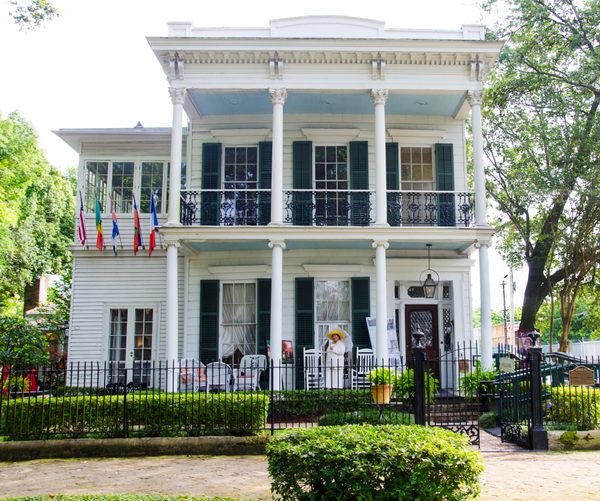Free People of Color Museum in New Orleans, Louisiana
Housed within a historic 1859 house, the Free People of Color Museum tells New Orleans's history of free people of color (f.p.c.), beginning with the earliest recorded arrival of a free person of color in 1722. The art, documents, and highly engaging tour guides walk visitors through the history of how rights and traditions evolved under the city's various ruling governments (French, Spanish, briefly French again, English, and American). In 1810, New Orleans had the largest free people of color population of any Southern city of (what is today) the U.S.A., and free people of color made up nearly 29% of the city's population. The museum delves into France's La Code Noir, which dictated French slavery practices and the human rights restrictions placed on free people of color. According to the Code Noir, enslavers could legally brand, whip, disfigure, and kill enslaved people who "gather in crowds either by day or by night." The law code dictated that free people of color could not house fugitives from slavery, and could face heavy fines if they were found guilty. The Code Noir also granted "freed slaves the same rights, privileges and immunities that are enjoyed by freeborn persons." In contrast to the U.S.A. and other colonies where free people of color experienced many more restrictions, in New Orleans, free people of color were largely literate, ran businesses, owned property, and were, at times, even enslavers themselves. When Spain took control of the city in 1763, the newly instated government introduced their own El Codigo Negro, which similarly outlined (somewhat less extensively) the rights and privileges of people of color, including paths to emancipation. The tour highlights the growth of Black traditions in New Orleans (and the whole of America), particularly the development of Creole culture. Tour guides share histories of 18th and 19th-century Black artists, doctors, business magnates, socialites, politicians, and more. The story of how and why free people of color participated in armed conflicts is also presented through documents and art. This museum is housed in a historic, 19th-century house on the same block as the Edgar Dégas House.


Housed within a historic 1859 house, the Free People of Color Museum tells New Orleans's history of free people of color (f.p.c.), beginning with the earliest recorded arrival of a free person of color in 1722. The art, documents, and highly engaging tour guides walk visitors through the history of how rights and traditions evolved under the city's various ruling governments (French, Spanish, briefly French again, English, and American).
In 1810, New Orleans had the largest free people of color population of any Southern city of (what is today) the U.S.A., and free people of color made up nearly 29% of the city's population.
The museum delves into France's La Code Noir, which dictated French slavery practices and the human rights restrictions placed on free people of color. According to the Code Noir, enslavers could legally brand, whip, disfigure, and kill enslaved people who "gather in crowds either by day or by night." The law code dictated that free people of color could not house fugitives from slavery, and could face heavy fines if they were found guilty.
The Code Noir also granted "freed slaves the same rights, privileges and immunities that are enjoyed by freeborn persons." In contrast to the U.S.A. and other colonies where free people of color experienced many more restrictions, in New Orleans, free people of color were largely literate, ran businesses, owned property, and were, at times, even enslavers themselves.
When Spain took control of the city in 1763, the newly instated government introduced their own El Codigo Negro, which similarly outlined (somewhat less extensively) the rights and privileges of people of color, including paths to emancipation.
The tour highlights the growth of Black traditions in New Orleans (and the whole of America), particularly the development of Creole culture. Tour guides share histories of 18th and 19th-century Black artists, doctors, business magnates, socialites, politicians, and more. The story of how and why free people of color participated in armed conflicts is also presented through documents and art.
This museum is housed in a historic, 19th-century house on the same block as the Edgar Dégas House.
What's Your Reaction?




























:quality(85):upscale()/2024/01/25/878/n/1922153/f94f61ec65b2bf18018990.47538761_.jpg)

:quality(85):upscale()/2024/01/26/759/n/29590734/b7f6660b65b3e8460d7196.77057039_.jpg)
:quality(85):upscale()/2024/01/27/741/n/1922153/8d43a26665b533b214de01.38307153_.jpg)











